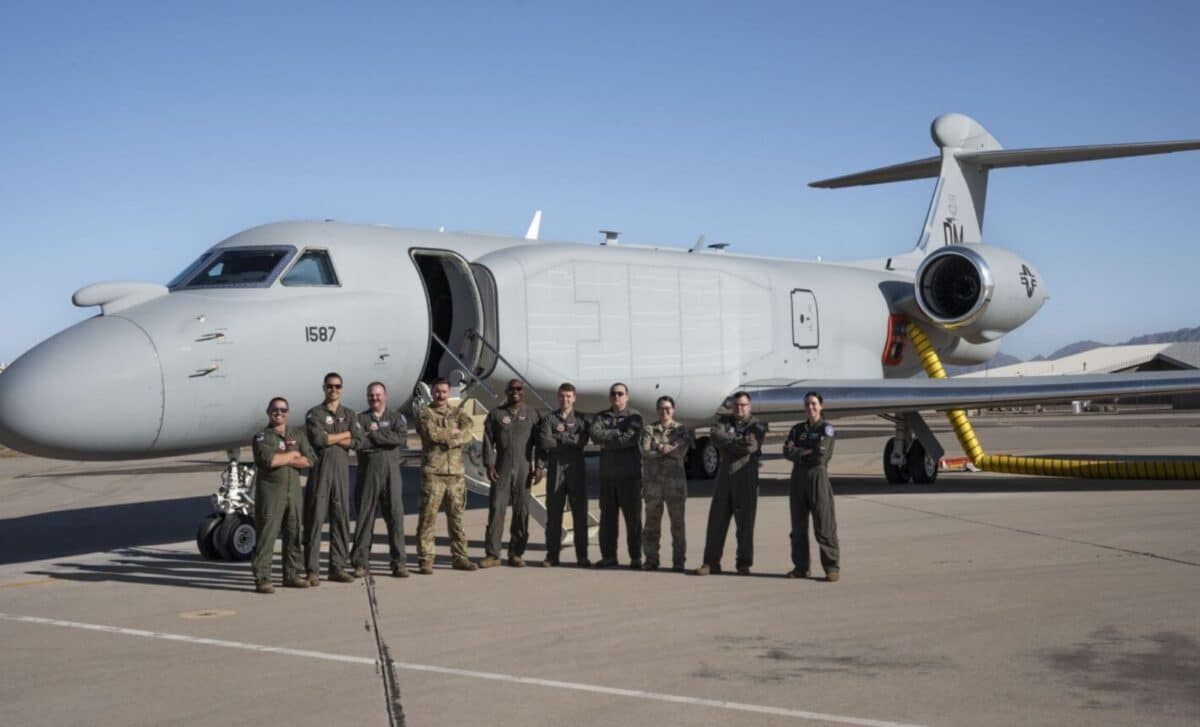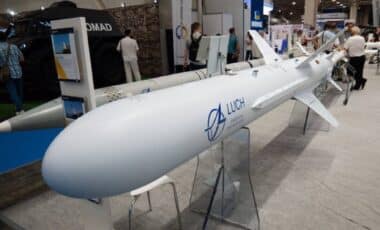The US Air Force has reached a significant milestone with the first flight of the EA-37B, an advanced airborne electronic attack aircraft. Based on the Gulfstream G550 jet, this newly designed aircraft aims to enhance the military’s electronic warfare capabilities, making it an essential asset for the United States and its allies. The first training flight took place on May 2, 2025, at Davis-Monthan Air Force Base in Arizona, marking a crucial step in modernizing US electronic combat operations.
The EA-37B is designed to provide comprehensive electronic warfare support, from jamming enemy communications to disrupting radar and disabling wireless roadside bombs. This aircraft is a key addition to the US Air Force’s strategy of countering emerging threats, particularly in the context of suppression of enemy air defenses (SEAD). With its operational capabilities, the EA-37B could reshape the landscape of military warfare.
A Century Underwater : Lost U.S. Navy Submarine Found Intact… But What Is It Hiding?
A New Tool for Electronic Warfare
As reported by Armées, on May 2, 2025, the 43rd Electronic Combat Squadron (ECS) conducted the first training sortie of the EA-37B, marking a pivotal moment for the US military’s electronic warfare efforts. According to reports, this flight marks the beginning of a broader rollout of the aircraft, which was first delivered in August 2024.
The EA-37B is designed to disrupt enemy communications, confuse radar systems, and disable bomb threats, all critical capabilities for modern warfare. By 2028, the US Air Force plans to field a total of fifteen units, further enhancing its electronic combat capabilities.
The aircraft, built on a modified Gulfstream G550, integrates sophisticated equipment provided by BAE Systems, with installation handled by L3Harris. This modernized platform replaces the older EC-130H Compass Call models, which have been gradually retired as part of the Air Force’s ongoing upgrade to face new and evolving military threats. The EA-37B’s advanced technology promises to deliver superior electronic warfare options, making it an invaluable tool for the US military and its allies.
Capabilities and Comparisons With Other Platforms
The EA-37B is a significant asset in the field of electronic warfare, especially within the US military’s broader strategy of Suppression of Enemy Air Defenses (SEAD). Its suite of capabilities includes COMINT (communications intelligence) and SIGINT (signals intelligence), which enable it to perform tasks ranging from long-range jamming to decoy operations.
According to the US Air Force, this aircraft stands out for its ability to carry multiple crew members solely dedicated to electronic warfare operations, a feature that differentiates it from other aircraft like the Navy’s EA-18G Growler or the F-16CM Fighting Falcon.
The EA-37B’s design and mission profile emphasize its ability to operate autonomously within a complex and contested electronic environment. This includes not only defending US forces but also supporting allied operations, particularly in high-stakes areas like the Indo-Pacific region. While other platforms can perform some electronic warfare functions, the EA-37B’s specialized crew and capabilities set it apart as a next-generation tool for modern combat scenarios.
Partnerships and Global Impact
The EA-37B’s role is not confined to US borders. The Royal Australian Air Force (RAAF) has already expressed interest in acquiring similar aircraft to strengthen its own electronic warfare capabilities. According to Lieutenant Colonel Jesse Szweda, the platform’s capabilities are crucial for addressing emerging threats in various regions.
However, the EA-37B may face competition from other nations’ growing electronic warfare platforms, particularly China’s Y-9LG, a similar aircraft developed by the People’s Liberation Army Air Force (PLAAF).








